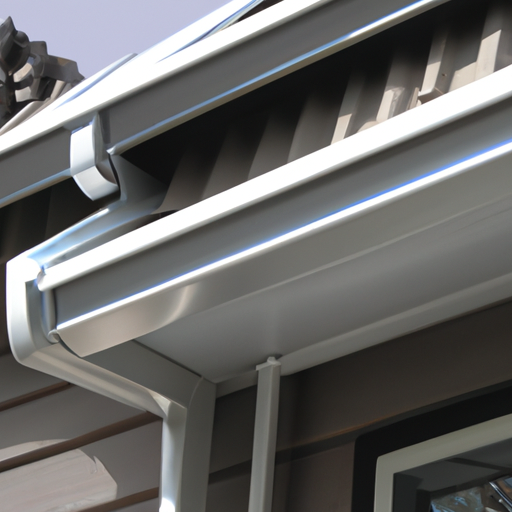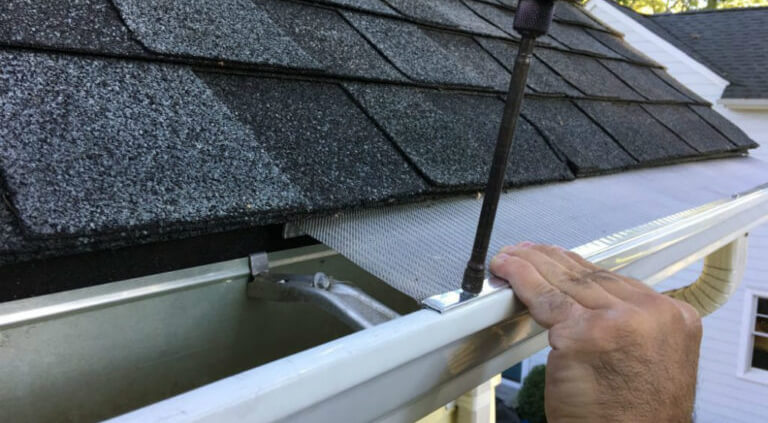Aluminum Eavestroughs Installation
If you are looking for a reliable and affordable way to update the look of your home, aluminum eavestroughs can give you the curb appeal your home needs. Installing aluminum eavestroughs is a straightforward project that can be done in just a few hours. Here’s what you need to know before you begin aluminum eavestroughs installation.
Choosing the Right Supplies
When it comes to aluminum eavestroughs, you want to make sure you’re using the right materials. The right tariff code, right type of aluminum, right sizing, right accessories and other specifications should all be taken into account. To ensure a successful installation, it’s best to buy your eavestroughs, fittings and accessories from one supplier who knows what you need and can confirm compatibility.
Preparing the Area
Before installing your aluminum eavestroughs, it’s important to make sure all building lines, pitches, and angles are correct so your eavestrough extension operates properly. Measure the area carefully and make sure you have the right measurements for all sides. Make sure you have enough room on both sides of the roof to attach the eavestroughs.
Installing the Eavestroughs
Once everything is measured and ready, you can install the eavestroughs. Be sure to start at the beginning and install them section by section in order. If you start in the middle, you run the risk of them not aligning properly. Each section of eavestrough should be leveled and attached to the roof with appropriate brackets. Nail the brackets and seal them with caulk to make sure they won’t move or leak water.
Connecting the Eavestroughs
After each section of eavestroughs is installed and leveled, connect them together. Making sure the eavestroughs are level is essential to ensuring the water will properly funnel off the roof. You should also caulk around the corners for extra protection against leaks. Once the eavestroughs are connected, it’s important to check for leaks before moving on to the next step.
Attaching Downspouts
The final step in aluminum eavestroughs installation is attaching the downspouts. This is an important part of the eavestroughs installation process as it ensures water is able to drain properly from the roof. Be sure to attach the downspouts at the height recommended by the manufacturer and in a location that will direct water away from your home’s foundation.
Installing aluminum eavestroughs is a straightforward process. By following these steps, you can ensure that your new eavestroughs will look great and perform perfectly. With just a few hours of work, you can update the look of your home and protect it from water damage.

Are aluminum gutters Easy to install?
Aluminum – Many homeowners prefer aluminum gutters because they’re cost-effective, corrosion-resistant, lightweight, easy to install and come in a wide variety of colors. If you’re installing gutters yourself and you have moderate DIY skills, aluminum gutters should be an easy project.
What does Home Depot charge to install gutters?
Q: What does Home Depot charge to install gutters? A: The average cost to install galvanized or aluminum gutters is approximately $4 to $9 per linear foot. There are also vinyl gutters which are much easier to install, and which run at roughly $3 to $5 per linear foot. Home Depot may offer installation services, but prices may vary depending on the size and scope of the job.
Can I install Eavestrough myself?
Gutters are most often installed by professionals, but there’s no reason you can’t do it yourself. All the materials and accessories are readily available at home centers, lumberyards, and roofing-supply firms. Special tools such as aviation snips and a gutter-seam crimper are required too. Some areas also require a permit and inspection for gutters. If you’re up for the challenge, make sure to read up to make sure you understand the process, then proceed.
Eaves troughs, also known as gutters, are an essential part of your home’s roofing system. They are a channel that collects and diverts rain water away from the home’s foundation and drainage system. Installing eavestroughs is a straightforward process that adds value and protection to your home.
When selecting your eavestroughs, consider the material. Aluminum is a popular material choice as it is affordable, durable, and lightweight. Aluminum eavestroughs come in different shapes and sizes, so you can find one that’s perfect for your home. First, determine the slope of your roof, so you can get the right size for optimal rainwater collection.
Before you begin the installation, identify any potential hazards on your roof and make sure the materials are secure and accessible. The eavestroughs should be at least a foot from the eaves on all sides. With the help of a friend, secure the first section of the eavestrough to the fascia board with nails. Make sure the section is level. Then, attach the next section in the same fashion to the first.
Once the eavestroughs are installed, you’ll need to add a downspout. Measure the distance and ensure it meets the local codes before cutting the hole in the trough. Finish off the jobs by attaching two brackets to each section, which will help secure and support the downspout as it hangs from the eaves.
To protect your eavestroughs, you can add a layer of sealant to seal the seams. This will help ensure the system remains watertight and well-maintained. Depending on the material, you may need to apply a protective finish to prevent corrosion or rust. Finally, keep an eye on your eavestroughs to check for any signs of wear and tear.
Installing aluminum eavestroughs is a relatively simple task that can add to the aesthetic of your home and provide proper drainage for your roof. With the right materials, tools, and safety precautions, you can successfully install your eavestroughs and enjoy their benefits for years to come.
For many homeowners, aluminum eavestroughs are a great way to improve the appearance of your home, while also protecting its exterior. Made from aluminum coils, eavestroughs or gutters help to collect rainwater and direct it away from your home’s foundation and other vulnerable areas. Though installation of eavestroughs can be a difficult and potentially dangerous process, these tips will help you to install your aluminum eavestroughs correctly and safely.
Depending on your eavestroughs type, you may need to fasten them to the fascia with nails or screws. However, since aluminum is a relatively thin material, it is best to use self-drilling screws specifically designed for use with aluminum. If you are using nails, galvanized ones are the best choice. Once you have installed the eavestroughs, it is important to make sure all the fasteners are firmly in place, using a power screwdriver if necessary.
It is also important to consider the pitch of your eavestroughs when installing them. The pitch should be about 1/4″ for every 10 feet of run, so that water is able to flow away from the home. If your eavestroughs are not installed at the proper angle, water can collect and cause damage to the fascia and other areas.
In addition, you must also install downspouts in order to direct the water away from your home. Downspouts should be approximately 6 to 10 feet apart, depending on the size of your eavestroughs. While plastic downspouts come in a variety of colors, aluminum is a popular choice since it is durable and won’t corrode or rust like some other materials.
When installing aluminum eavestroughs, it is also best to use a waterproof sealant around the edges. This will help to prevent leaks and other issues that can lead to costly repairs.
Finally, once the installation process is complete, you may want to consider using a ladder stabilizer to ensure the safety of anyone who needs to access the roof. Regularly inspecting your aluminum eavestroughs for blockages or sediment build-up is also important, as this can contribute to the backing up of water and other issues.
Installing aluminum eavestroughs can be a dangerous and difficult process, but the results are well worth it. With proper installation and regular maintenance, you can improve the appearance and safety of your home.









Leave a Reply
Want to join the discussion?Feel free to contribute!